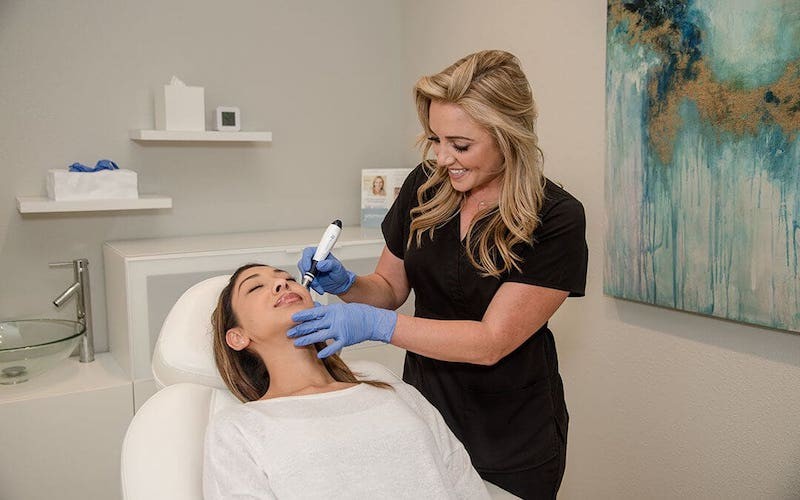
Many of us already understand the benefits of Microneedling as an effective treatment for overall skin rejuvenation, but there are ways to augment the treatment with the use of serums such as Platelet Rich Plasma (PRP) and Hyaluronic Acid (HA). These can not only increase the efficacy of a microneedling treatment but can also help to make the treatment more comfortable and aide in the healing process. Given these points, the cost/benefit is easy to see but knowing which additive to choose can be more tricky. Let’s discuss the differences between PRP and HA as two of the more popular microneedling treatment variations.
What is Platelet Rich Plasma?
When our skin suffers a trauma, such as a cut or scrape, our bodies begin the wound healing cascade. Our blood has 4 basic components: Red cells, White cells, Platelets, and Plasma. Plasma makes up about 55% of our blood and is what creates its liquid form. Platelets are the “sticky” part of blood and allow blood to clot when they encounter an obstruction in their flow, such as a wound. Platelets also contain many cellular parts that keep our blood and our bodies balanced, and of these we are really interested in the Growth Factors which speed up cellular repair.
Naturally, platelets play a big role in the microneedling treatment recovery process whether we use a PRP serum or not, since our bodies are going to repair the damaged skin. But when we use PRP we essentially sandwich the wound with intrinsic and extrinsic growth factors to create a more encompassing healing environment. To take advantage of this, first we must create our PRP by collecting some blood from the patient and spinning it at very fast rate in a centrifuge. This process separates the red and white cells leaving a concentration of platelets in plasma that is 5x to 20x that of what is found in a regular blood sample. Now we have our serum to apply to the skin as we do our controlled damage in the microneedling treatment.
What is Hyaluronic Acid?
Being a naturally occurring compound in our bodies, HA is a cellular lubricant and is extremely efficient at binding with water. Hydration is key to the wound-healing process as it reduces the inhibition of growth factors flowing to damaged cells. By adding topical HA to a microneedling treatment area we can see significantly decreased healing times which means less down-time for the patient. The HA used topically for treatment is synthetic as there is no naturally-derived HA on the market, but it is widely used and considered extremely safe. The particular HA that we source for our practice is 100% vegan and made in the USA so we have the utmost confidence in using it in our treatments.
Why Use PRP over HA?
Microneedling with PRP is one of the most efficacious skin rejuvenation treatments that people would generally consider “completely natural.” Here are some reasons why you should consider microneedling with PRP:
- It promotes faster healing.
- It uses your own growth factors.
- Treatment results are generally seen sooner.
- Fewer treatments are generally needed for the desired results.
Why Use HA over PRP?
Microneedling with HA can also give you amazing results and return a youthful glow to a dull complexion. Here are some reason why you might consider microneedling with HA:
- If you have platelet disorder.
- If you regularly take aspirin, a platelet inhibitor, or anti-coagulant medication.
- If you have an auto-immune disease.
- If you have certain blood or bleeding disorders.
- The cost difference from PRP.
The Benefits of Microneedling With PRP or HA
The process of creating tiny “micro-channels” in the skin with a microneedling treatment allows topical serums like PRP and HA to penetrate into deeper layers of the dermis and epidermis. This leads to overall better wound healing and, ultimately, better results. Whether your goal is general skin rejuvenation or you have a specific concern to target, microneedling is our practice’s go-to procedure. Talk to your trusted provider to discuss which treatment plan is right for you!
